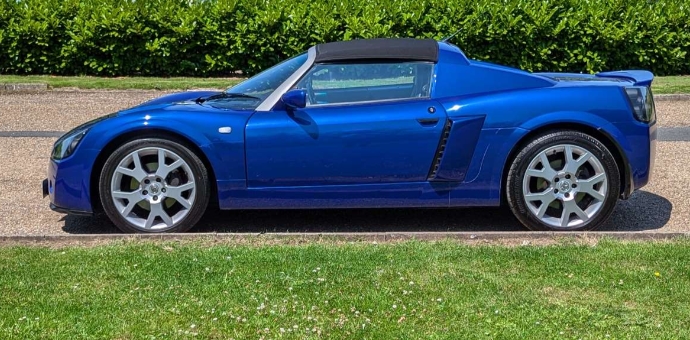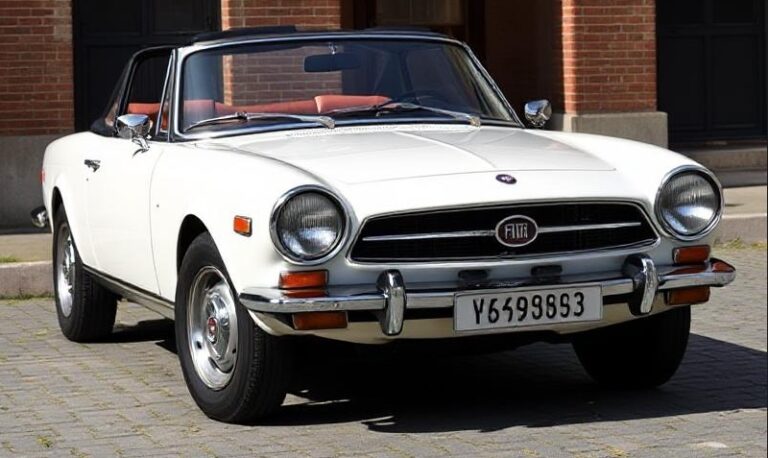The Evolution of the Triumph Stag: A Classic British Sports Car
The Triumph Stag is a name that resonates with vintage car enthusiasts and collectors who appreciate British automotive history. Produced from 1970 to 1977, the Stag was Triumph’s ambitious attempt to break into the growing market for luxury sports cars. Combining elegant styling, practicality, and robust performance, the Stag has left an indelible mark on the automotive world.
Origins and Development: 1960s
The story of the Triumph Stag begins in the 1960s, a time when British automakers were competing fiercely with their counterparts from Europe and the USA. The Stag was conceptualized by Giovanni Michelotti, an Italian designer who had a longstanding relationship with Triumph. Initially developed as a prototype for a luxury sports car to complement the company’s existing models, the Stag was unveiled in 1966 as a prototype at the International Motor Show in London.
The initial designs called for a sleek, four-seater convertible capable of providing both comfort and thrilling performance. The car’s chassis was derived from the Triumph TR6, while its engine was a brand-new 2997cc V8 designed by Triumph’s in-house engineering team. This innovative engine was aimed at providing smooth power delivery and ample torque, enhancing the car’s overall performance profile.
Production Years: 1970-1977
The Triumph Stag was officially put into production in 1970 and remained in production until 1977, with approximately 25,000 units produced. The car was initially well-received, thanks in part to its striking design, comfortable interior, and solid performance. It quickly became a popular choice among consumers looking for a sporty yet practical vehicle.
Model Variants and Trim Levels
The Triumph Stag had a relatively straightforward lineup, focusing more on refinement than on numerous variants. Here’s a breakdown of the most notable models and trim levels offered throughout its production run:
1970-1971: Early Models
The Stag was launched in various configurations, most of which were powered by the 3.0-liter V8 engine producing about 145 hp. The initial offerings primarily included:
- Triumph Stag: The base model featured a soft top and came equipped with wood-trimmed interior and a decent sound system. It was aimed at consumers looking for a sporty convertible experience.
- Triumph Stag with Hardtop: A hardtop version of the Stag was also available, enhancing its all-weather usability. The hardtop provided a much more refined driving experience while ensuring the car’s aesthetics were not compromised.
1972-1974: Mid-Production Updates
As production progressed, a few updates were introduced, mostly involving cosmetic changes and minor adjustments to align with consumer feedback:
- 1972 Model Year: The interior saw improvements, with better quality materials and improved ergonomics. The introduction of additional optional features, such as better seating materials and sound insulation, made the experience more luxurious.
- Triumph Stag MKII: In 1974, the MKII version was introduced, featuring a revised cooling system to address the overheating problems that had plagued early models. This upgrade helped enhance overall reliability and performance.
1975-1977: Final Years and Decline
By the mid-1970s, the Stag began to face serious challenges. The global oil crisis and an economic downturn in the UK led to a decline in demand for luxury sports cars, and as costs increased, production began to wind down:
- Triumph Stag Special: Offered in limited quantities in 1976-1977, this model featured special badging and cosmetic upgrades, including unique colors and additional interior refinements. However, it was unable to change the overall decline in sales.
.
Owning a Vintage Car means you need to protect it!
Strategies to Make Sure Your Vintage Car Doesn’t Get Stolen
.
Key Features and Characteristics
Throughout its production span, the Triumph Stag was known for several key features that defined its character:
- Performance: The 3.0-liter V8 engine was innovative for its time, featuring a single overhead camshaft design and delivering impressive performance. With a 0-60 mph time around 8 seconds, it was competitive against its contemporaries.
- Design: The car’s sleek, refined design combined Italian elegance with British styling. The distinctive four-seat configuration offered practicality, making it ideal for family outings or weekend getaways.
- Convertible Appeal: The soft top convertible design, complemented by the hardtop option, allowed drivers to enjoy the elements while also ensuring comfort and utility year-round.
- Comfort and Luxury: Unlike many sports cars of its time, the Stag emphasized a comfortable and luxurious cabin environment, with high-quality leather seats, wood accents, and ample legroom.
Challenges and Decline
Despite the Stag’s initial success, it faced several challenges that ultimately contributed to its decline in popularity. The most significant of these were mechanical reliability issues, particularly related to the cooling system and engine overheating. In a market that increasingly valued reliability, these problems hindered the Stag’s reputation.
The oil crisis of the 1970s saw consumer preferences shift toward smaller, more fuel-efficient vehicles. Sales of the Stag suffered dramatically as potential buyers gravitated towards more practical options amidst rising fuel costs.
Legacy and Revival
Although production of the Triumph Stag ceased in 1977, its legacy continues to be felt today. The vehicle has achieved a cult status among enthusiasts and collectors, fueling a vibrant classic car community. Various owners have restored and modified their Stags, leading to renewed interest in the model.
In the years since, several specialist companies have emerged that cater specifically to Triumph Stag owners, providing restoration services, spare parts, and performance upgrades. Additionally, the Stag has appeared in various classic car events and shows, often drawing attention for its unique design and historical significance.
Conclusion
The Triumph Stag’s journey from concept to classic reflects the dramatic changes in the automotive landscape during the 1970s. While its tenure was shorter than intended, the Stag remains a symbol of British craftsmanship and automotive innovation. With its unique blend of performance, comfort, and style, the Triumph Stag continues to evoke nostalgia and admiration among classic car aficionados around the globe.







